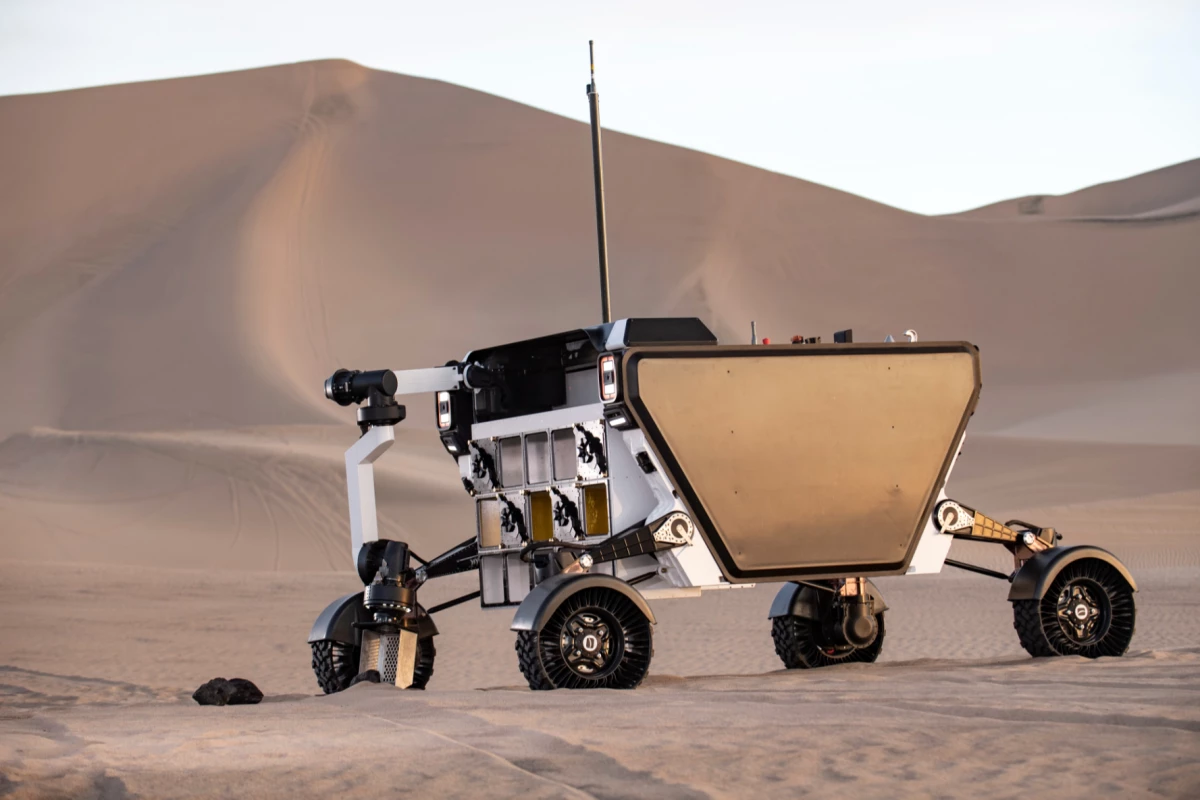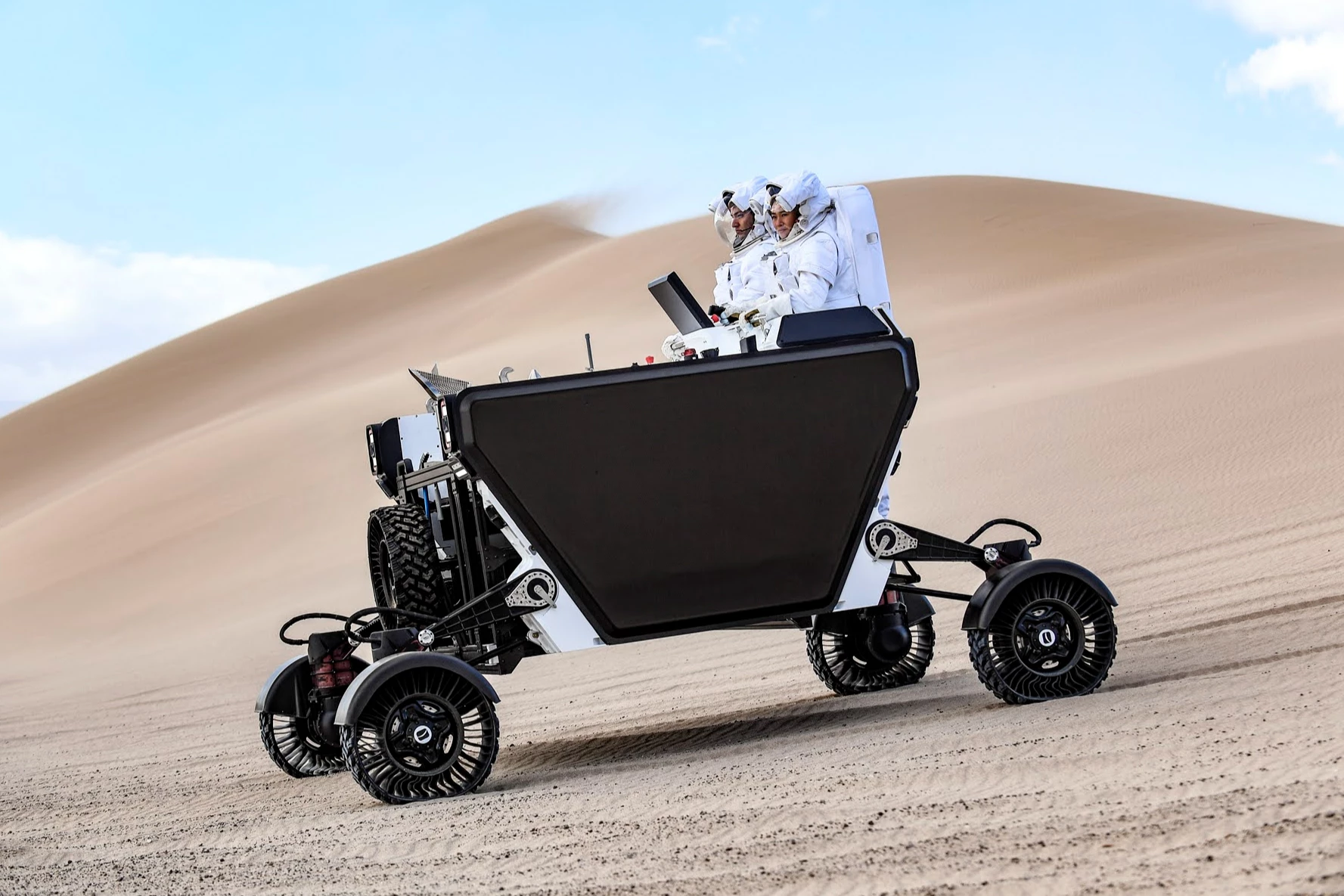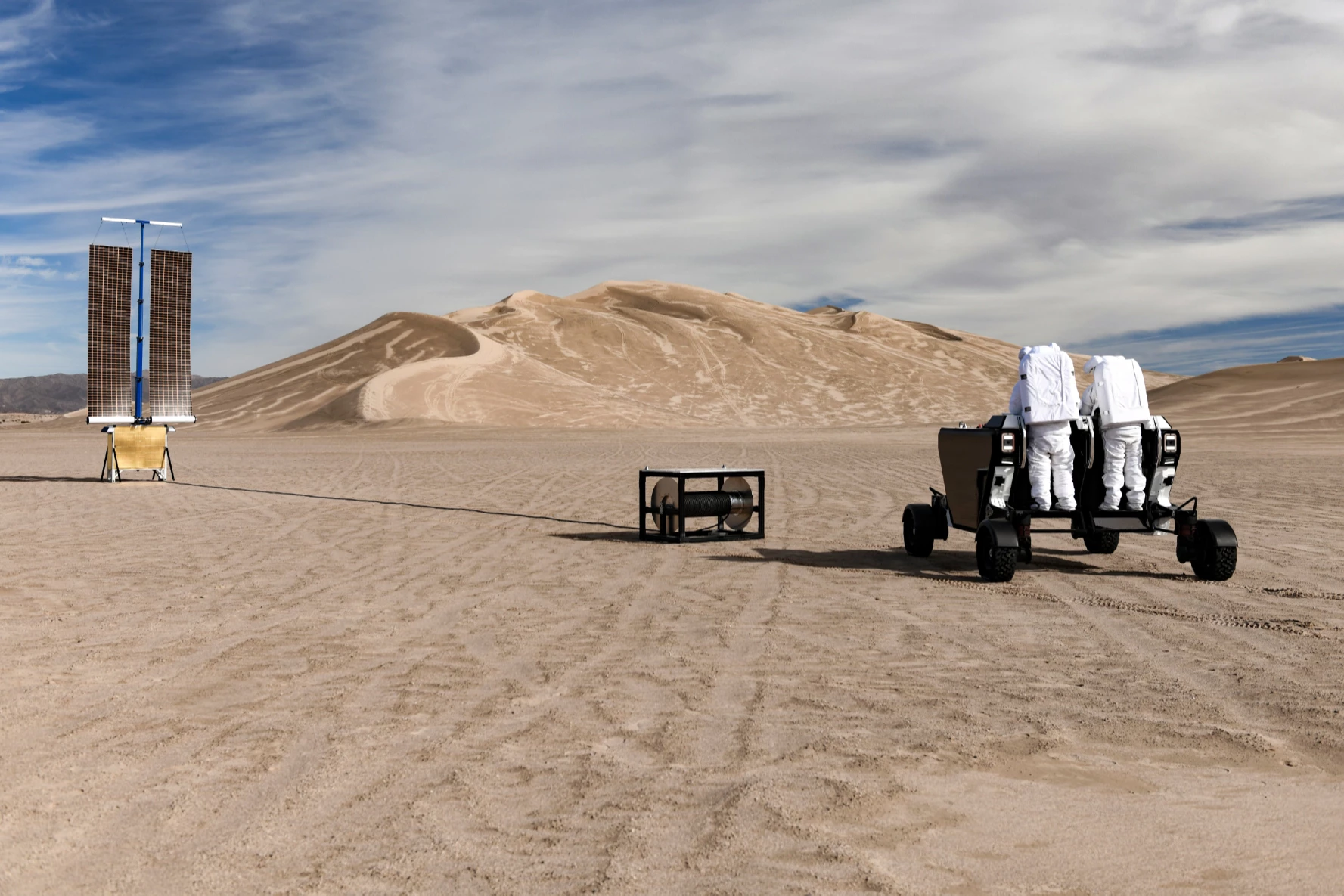When SpaceX launches its lunar mission scheduled for 2026, it’ll be accompanied by Venturi Astrolab’s Flexible Logistics and Exploration (FLEX) rover, making it the largest, most capable rover to ever travel to the Moon.
Previous planetary rovers were bespoke vehicles custom-designed for specific missions. Not so the FLEX rover, whose increased versatility is a function of its unique modular design.
FLEX’s design means it can be fitted with an unpressurized two-person crew interface that can be removed to make room for more cargo. And its robotic arm can be used for taking samples and performing scientific and logistical activities. Adaptive suspension keeps the rover’s chassis level in harsh terrain, navigation and hazard detection sensors assist with semi-autonomous operations, and a deployable solar panel array points itself towards the Sun to ensure FLEX’s internal batteries stay charged.
Moreover, the multi-purpose FLEX can carry a combined rover and cargo mass of over two tons, which is almost three times more than its largest predecessor.

The rover is also geared for establishing infrastructure and specialized systems on the Moon’s surface, fitting with Astrolab’s vision of assisting in the creation of a permanent human presence, firstly, on the Moon and then on Mars.
“Our Astrolab team has created much more than a rover for use on the Moon or Mars,” said Jaret Williams, Astrolab’s founder and CEO. “We’ve created a logistics system that can accommodate a wide variety of cargo. We expect that this approach will help establish a permanent lunar outpost on the Moon at a lower cost and in less time than previously envisioned.”
FLEX’s ability to collect, transport, and deploy large payloads semi-autonomously makes it indispensable to Starship, SpaceX’s fully reusable transportation spacecraft.
“Starship is designed to transport large amounts of cargo, including rovers, to the Moon and Mars for research and exploration,” said Tom Ochinero, Senior Vice President of Commercial Business at SpaceX. “Developing sustainable outposts will require lunar logistics and transportation to the surface of the Moon, like what Astrolab offers.”
The challenging terrain of the California desert has been the staging ground for full-scale testing of the FLEX’s functions, which began in 2022 and is ongoing. Astrolab’s team of industry-leading planetary rover and robotics experts has tested both crewed and telerobotic operations, deployed a variety of hefty payloads, undertaken science operations using the robotic arm, and performed engineering testing of FLEX’s mobility.
The following computer-generated video from Astrolab shows the FLEX rover in action, deploying and carrying cargo, operating its robotic arm, utilizing the modular crew interface for human exploration, and deploying infrastructure.
Source: Venturi Astrolab








